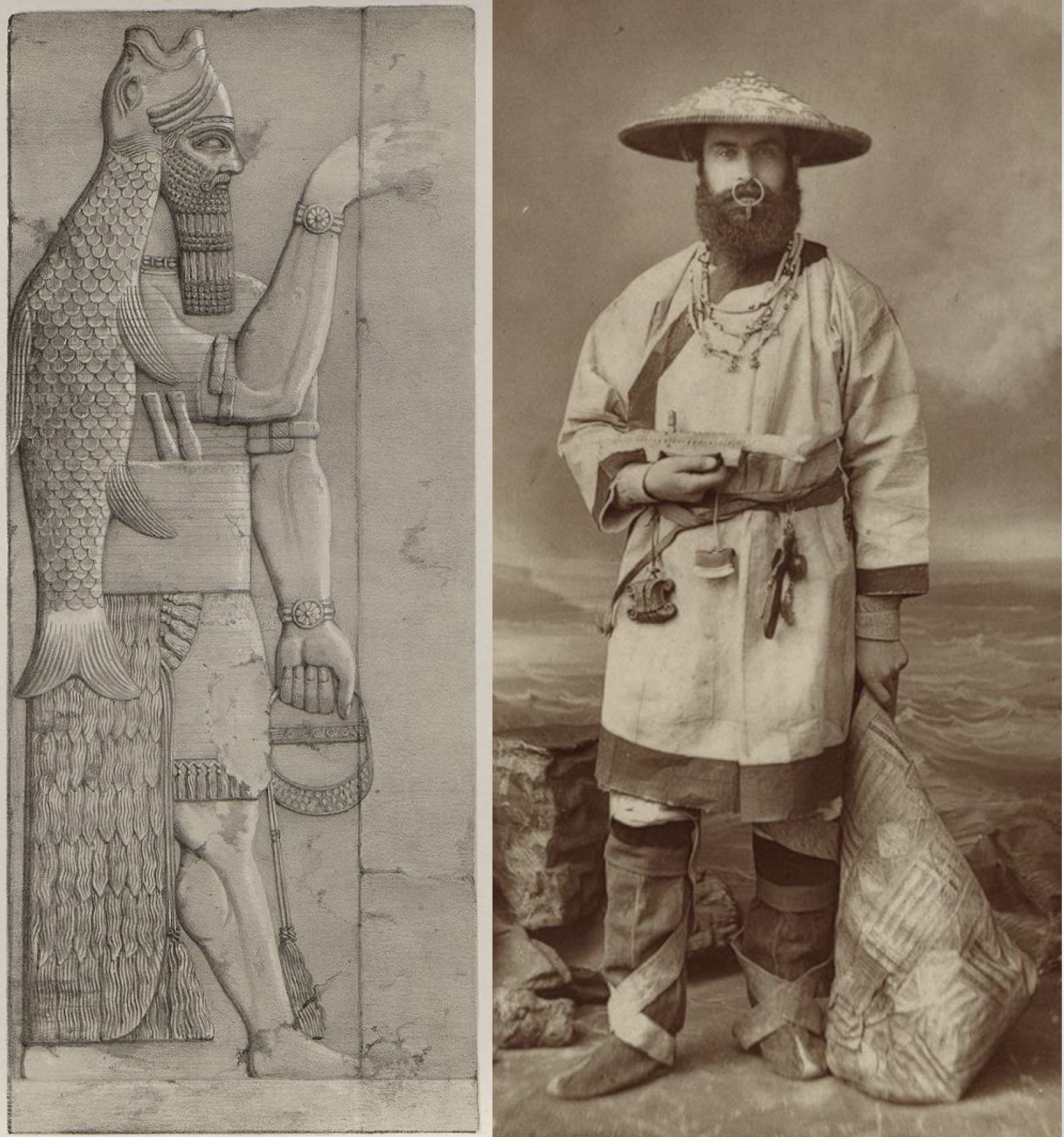Forschung
Fish Skin Magic: Exploring Occult Practices in Ancient Mesopotamia and Arctic Indigenous Cultures
Elisa Palomino | Postdoktorandin, KHI-ANAMED Fellow

Fish Apkallu. Bas-relief from the ruins of Nimroud excavated by Sir Austen Henry Layard. British Museum. Fig. 2 Henry Lansdell. British explorer dressed in a Nanai fish skin coat from the Amur River, Siberia. Ethnographic museum, Stockholm.
Ancient civilisations in Mesopotamia and the Arctic developed intricate rituals, incorporating fish skin into their religious practices. Mesopotamian priests and Arctic shamans alike wore fish skin garments, tapping into its mystical properties to navigate the supernatural realms. In Mesopotamia, fish were revered for their divine qualities, with Enki, the god associated with water, fertility, and healing creating the seven demi-gods or Apkallu. The fish apkallu, a fish-human hybrid wore a cloak made from a species of giant carp from the Euphrates and Tigris basin, symbolising the connection between humanity and the divine. Mesopotamian leather production included fish skins, suggested by ancient texts and depicted in art, though lacking direct archaeological evidence.
Similarly, in early modern Arctic societies inhabited by Inuit, Ainu, Saami, Hezhe, and Nivkh Indigenous Peoples, fish holds significant spiritual importance. These cultures, deeply connected to nature and reliant on fishing, viewed fish as sacred beings. Fish skin served as raw material for crafting garments and accessories, symbolising a spiritual connection with the animal world. Arctic shamans, acting as intermediaries between humans and spirits, often wore fish skin garments during rituals to commune with the spirit realm.
A comparative analysis reveals striking parallels between Mesopotamian occult practices and Arctic shamanism involving fish skin. Both practices recognised fish skin's spiritual properties for accessing transcendent powers and shared a belief in divine powers residing within animals, plants, and natural forces. While Mesopotamian religion shifted from nature-based deities to controllers of nature, Arctic societies also faced a similar transition under colonisation. Contemporary society's emphasis on materialism has led to a neglect of spiritual harmony with nature. Rituals, deeply ingrained in human culture, preserve cultural heritage and foster community bonds. Exploring Mesopotamian occult practices and Arctic shamanism sheds light on humanity's quest for spiritual connection and transcendence. By acknowledging these ancient practices, we can rediscover our spiritual heritage and deepen our connection with the universe.


